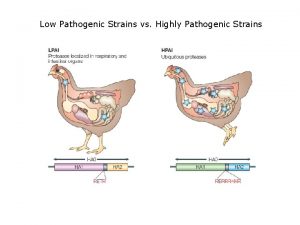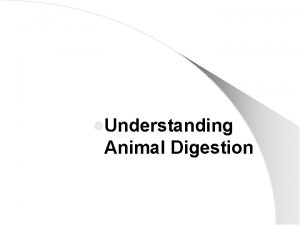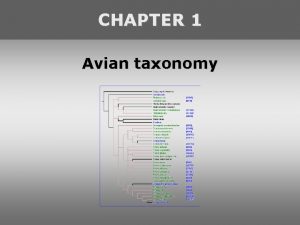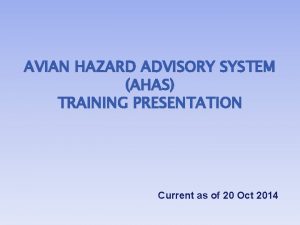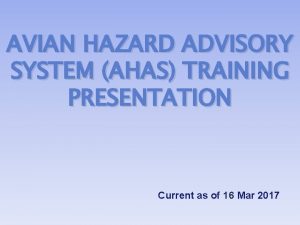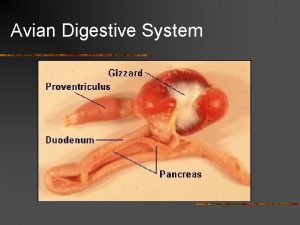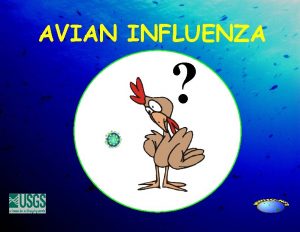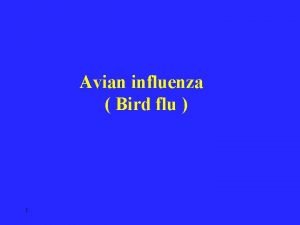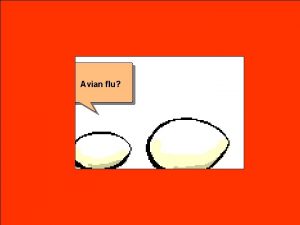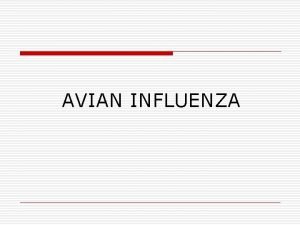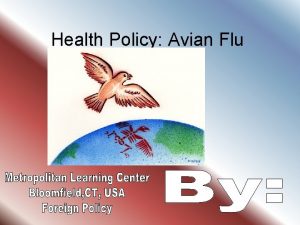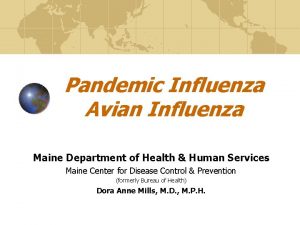Avian Influenza An overview and an Update on










- Slides: 10

Avian Influenza An overview and an Update on Tanzania WHO/HSE Tanzania February 01, 2017

Influenza viruses • Influenza A viruses: – infect humans and many different animals. • Influenza B viruses: – only circulate among humans and cause seasonal epidemics. • Influenza C viruses: – can infect both humans and pigs but infections are generally mild and are rarely reported. • In humans: – A and B viruses are of epidemiological importance

Avian influenza • Disease caused by infection with avian (bird) influenza (flu) Type A viruses • Viruses occur naturally among wild aquatic birds (ducks, geese, and swans, gulls, terns, plovers, surfbirds, sandpipers, puffins) worldwide. • Can infect domestic poultry and other bird animal species.

Avian influenza • Avian flu viruses do not normally infect humans or result in efficient transmission of viruses between people. • Influenza type A viruses are distinct from human influenza viruses and do not easily transmit between humans. • Human infections are primarily through direct contact with infected animals or contaminated environments.

Emergence of novel viruses: Mutation and Reassortment 1 1. Mutation Avian virus Human virus 2. Reassortment Reassortant Human- Avian virus

Emergence of novel viruses: Mutation and Reassortment 2 1. Mutation Avian virus Human virus 2. Reassortment Reassortant Human- Avian virus

Human infections • To date, no human cases of infection with influenza A(H 5 N 8) have been detected. • Human cases with related clade 2. 3. 4. 4 A(H 5 N 6) viruses have been detected and reported in China. • Human infections with A(H 5) viruses: rare and occur among those exposed to sick/dead infected birds (or their environments).

Avian Influenza A(H 5) in Tanzania • No confirmed reports of deaths of wild ducks and birds • Meetings under the One Health Unit in the Prime Minister’s Office (MALF, Health, Wildlife, Partners) • Costed plan to visit areas around Lake Victoria (Kagera, Mwanza, Geita, Mara) • Need to revise preparedness and response plan • Review of stocks: PPEs, oseltamvir • Prepositioning in WHO regional sites (IST)

Influenza surveillance in Tanzania • Alert letters sent to administrative secretaries in all regions. • Capacity: 7 sentinel surveillance for influenza. – influenza-like illness (ILI), severe acute respiratory illness (SARI) • Gaps in surveillance capacity - HR, lab supplies, community participation and engagement

Thank you
